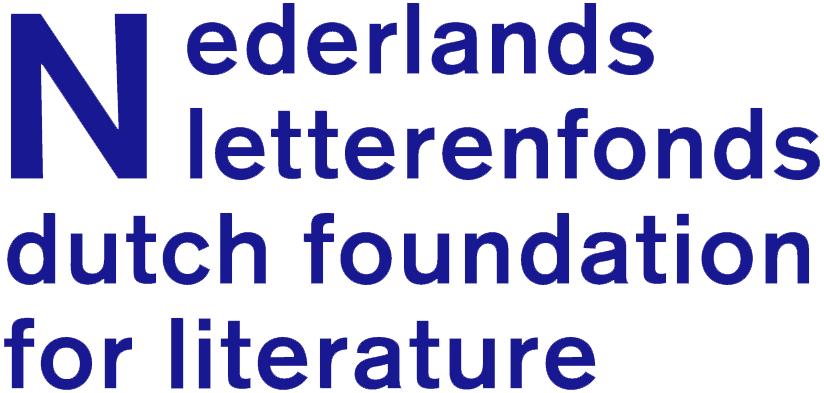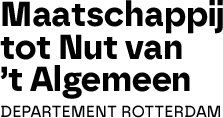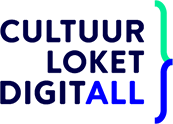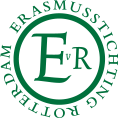Artikel
Interviews with Australian poets
Editorial: 1 July 2011
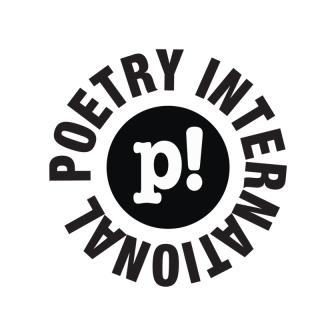
27 juni 2011
The interview questions were drafted primarily with new readers in mind, especially those outside of Australia who make up the bulk of PIW readers and are my main focus when editing the Australian pages. There are several questions, the straightforward “When did you start?”, “Who do you read?” type of question, aimed at introducing new readers to the poet, where they came from and the conversations they are engaged in. Several others are perhaps too broad or too open to be meaningful in the initial asking, or use terms such as ‘everyday life’, ‘subjectivity’ or ‘Australian’, which themselves demand defining before the question containing them might be answered. This was very much the point as through the process of defining the terms, oftentimes the poets define their trajectories and interests. In addition, it should be noted that through the drafting of questions and the juggling of communications with some thirty to forty poets over a two year period, there are occasional variations in a couple of the questions. Where possible I have sought to rectify these errors, but some remain (for example variations in Q10), though will hopefully not detract nor distract unnecessarily.
While the interviews took a survey format, in many cases there was a moderate amount of discussion behind the final versions that appear here. Initially I had planned on asking follow-up questions to each poet, but quickly abandoned this idea, preferring to create a text that could be as profitably read horizontally as vertically. I also wanted to keep the interview’s focus on the interviewees, and not the interviewer as can sometimes happen, the interview degenerating into a soapbox for the interviewer’s views. Where time allowed, I did suggest to poets points in their responses where it would be interesting to hear more or where specific examples by way of poems might be of interest to the reader. Quite a few of the poets drafted and re-drafted their responses, with the last ones coming in only in the final few days before publication.
Unfortunately, there were several poets it was difficult to make contact with (those either not on email or whose email address had changed since 2004). Of those I was able to contact, several poets wrote back saying that they preferred not to participate for various well-grounded reasons, which in some cases illuminated some troubling aspects of the Australian poetry scene in their own right. Several poets did not respond at all, which is of course a response in itself. Happily, thirty poets did. It should be noted that none of the poets received any payment for the time taken to respond, but volunteered their work. Sadly, quite a few poets who would have added new dimensions to this project are no longer with us. It is with regret that I cannot publish here responses by Dorothy Porter, Noel Rowe, Lisa Bellear, Bruce Beaver, Peter Porter and John Forbes. I would direct readers to their pages on PIW and will aim over the coming year where possible to source and publish interviews or essays from them. This project is dedicated to their memory and the long conversation of which they are still very much a living presence.
Overwhelmingly, the responses were incredibly generous. The poets teased out (and sometimes simply teased) their own sense of what was being asked with alacrity and at turns dexterous and systematic care to provide the reader with new insights into the poetry and its making along with the Australian scene as it has been, is and may well be in the future. There are numerous points of convergence and conflict for readers and critics alike to unravel or reduce, fathom or network. American and French poetries both loom large, not least “that sooky, mum’s-boy scallywag”, Rimbaud, as Pam Brown has him. Sappho, Mallarmé, Ginsberg, Duncan and Ashbery all make frequent appearances from abroad, while Ken Slessor, Judith Wright, David Campell and Frank Webb reappear from the recent past. Rilke and O’Hara are in there too. Alongside the usual suspects, the prodigious, tangential and catholic reading of poetry in and out of their own languages quickly shows how healthy the rootstock of Australian poetry is. The Penguin European Poets series of the 1970s crops up in several interviews and its importance to contemporary Australian poetry, assisting the passage beyond English and American traditions, should not be underestimated. The T’ang poets, again thanks to Penguin, prove to have been companions to many of the poets here along their differing ways.
One consistent theme was the sense of how vibrant and multiple Australian poetry is at present. David Malouf commented that Australian poetry “is of so many kinds these days, so much is published and in so many forms, so many people are writing, that it is hard for an individual reader to grasp more than a fraction of what appears, and impossible to assess in any clear way who matters and what does not”. On this point, some poets noted how accommodating and nice the contemporary scene is, while wishing for perhaps a little bit more dispute and argument along the way. Others at times provide perhaps just the grist needed for such arguments to develop or take new turns, hopefully in constructive ways. Ecopoetics, “perennial suspicions about [the] lyric”, L=A-N=G=U=A=G=E poetry, “ayleetist”-ism and the tug-of-war between irony and sincerity are in question and play across many of the responses, as much as quantum mechanics, queer theory, activism, religion, sport and, often enough, poesis contribute to the mix. But that’s only to scratch the surface. A common thread to many of the responses is the idea Gig Ryan puts most succinctly that, “Poetry is the vanguard of language.” What is most apparent is the deep investment in and passion for poetry common among the poets here, the sense that poetry is integral to their life.
While Auden’s line that poetry makes nothing happen resonates in several of the responses in differing ways, as the politics of writing are addressed and sometimes dodged, Lionel Fogarty offers the clearest demand that poetry engage directly with Australian politics and the history of European colonisation, saying, “Poetry is only relevant when it changes the bloody law! And poetry is only relevant when it boosts love of intelligence, and also futuristically gives younger people the courage and confidence to overcome all political matters and emotional slaughters. At an international level communities of the world will see through Australian Aboriginal poetry that we can live One Land One Love!”
In the following is an abundance of the precise and polysemous, the enliveningly ludic and tartly ironic, the fiercely direct and quietly heartfelt or honest, the basic grump and grind that goes into a culture. Enough to give readers a generous glimpse into the elsewhere and otherwise from which Australian poetry arrives and to which it speaks. Read vertically or horizontally, these interviews give readers a chance to eavesdrop on the various and variegated conversations in range and at play –“the deep play” of poetry as the American poet Robert Hass put it in Rotterdam recently or “play space-time” as Chris Edwards has it here – within contemporary Australian poetry. There is plenty of divergence to be had, difference and disagreement as well as commonality and communion. I hope that these interviews will take readers into the poetry and perhaps lead them to join the abounding conversations taking place down there in the further south.
If as Les Murray noted art is indefensible, the same is infinitely more so the case for primary research into poetry that follows a vague and flawed sociological approach. Such as this. Back when I was studying Australian poetry at university, I visited the Australian National Library and listened to Hazel de Berg’s interviews of Australian poets. In her thirteen years at the National Library, Hazel de Berg logged a prodigious 1,300 interviews, creating a resource of inestimable value to the understanding and study of Australian history and culture. It was with her interviews of poets during the 1970s and early 1980s in mind that I started this survey project in 2009, hoping to be able to gather responses from the majority of the poets I’ve published on PIW since 2004.
In this issue, you will find thirty interviews with poets from the Australian pages of PIW. I drafted the questions based on the happily strange sense of the needs and concerns of poetries outside of Australia that I’ve come into contact with through the Poetry International community and publishing translations through Vagabond Press, and the way they have made my own understanding of poetry from Australia, its vitality and limitations alike, cohere at times. Part of my aim was to give new readers, especially readers outside Australia, a way into the poetry alongside the poetry, to whatever strangeness – multiple and complex, at odds and in process – there might be there for them to enjoy and profit from within Australian poetry and its worlds. Another aim was to open up conversations, or at least provide a space or outlet for ones already underway, about Australian poetry in an international context, in the hope that those conversations might find new interlocutors outside Australia, and better yet outside English. Most simply, the project was, as with any interview, aimed at making the unfamiliar less so, though perhaps no less strange, and introducing new readers to the vibrant, multivalent poetry being written in Australia.The interview questions were drafted primarily with new readers in mind, especially those outside of Australia who make up the bulk of PIW readers and are my main focus when editing the Australian pages. There are several questions, the straightforward “When did you start?”, “Who do you read?” type of question, aimed at introducing new readers to the poet, where they came from and the conversations they are engaged in. Several others are perhaps too broad or too open to be meaningful in the initial asking, or use terms such as ‘everyday life’, ‘subjectivity’ or ‘Australian’, which themselves demand defining before the question containing them might be answered. This was very much the point as through the process of defining the terms, oftentimes the poets define their trajectories and interests. In addition, it should be noted that through the drafting of questions and the juggling of communications with some thirty to forty poets over a two year period, there are occasional variations in a couple of the questions. Where possible I have sought to rectify these errors, but some remain (for example variations in Q10), though will hopefully not detract nor distract unnecessarily.
While the interviews took a survey format, in many cases there was a moderate amount of discussion behind the final versions that appear here. Initially I had planned on asking follow-up questions to each poet, but quickly abandoned this idea, preferring to create a text that could be as profitably read horizontally as vertically. I also wanted to keep the interview’s focus on the interviewees, and not the interviewer as can sometimes happen, the interview degenerating into a soapbox for the interviewer’s views. Where time allowed, I did suggest to poets points in their responses where it would be interesting to hear more or where specific examples by way of poems might be of interest to the reader. Quite a few of the poets drafted and re-drafted their responses, with the last ones coming in only in the final few days before publication.
Unfortunately, there were several poets it was difficult to make contact with (those either not on email or whose email address had changed since 2004). Of those I was able to contact, several poets wrote back saying that they preferred not to participate for various well-grounded reasons, which in some cases illuminated some troubling aspects of the Australian poetry scene in their own right. Several poets did not respond at all, which is of course a response in itself. Happily, thirty poets did. It should be noted that none of the poets received any payment for the time taken to respond, but volunteered their work. Sadly, quite a few poets who would have added new dimensions to this project are no longer with us. It is with regret that I cannot publish here responses by Dorothy Porter, Noel Rowe, Lisa Bellear, Bruce Beaver, Peter Porter and John Forbes. I would direct readers to their pages on PIW and will aim over the coming year where possible to source and publish interviews or essays from them. This project is dedicated to their memory and the long conversation of which they are still very much a living presence.
Overwhelmingly, the responses were incredibly generous. The poets teased out (and sometimes simply teased) their own sense of what was being asked with alacrity and at turns dexterous and systematic care to provide the reader with new insights into the poetry and its making along with the Australian scene as it has been, is and may well be in the future. There are numerous points of convergence and conflict for readers and critics alike to unravel or reduce, fathom or network. American and French poetries both loom large, not least “that sooky, mum’s-boy scallywag”, Rimbaud, as Pam Brown has him. Sappho, Mallarmé, Ginsberg, Duncan and Ashbery all make frequent appearances from abroad, while Ken Slessor, Judith Wright, David Campell and Frank Webb reappear from the recent past. Rilke and O’Hara are in there too. Alongside the usual suspects, the prodigious, tangential and catholic reading of poetry in and out of their own languages quickly shows how healthy the rootstock of Australian poetry is. The Penguin European Poets series of the 1970s crops up in several interviews and its importance to contemporary Australian poetry, assisting the passage beyond English and American traditions, should not be underestimated. The T’ang poets, again thanks to Penguin, prove to have been companions to many of the poets here along their differing ways.
One consistent theme was the sense of how vibrant and multiple Australian poetry is at present. David Malouf commented that Australian poetry “is of so many kinds these days, so much is published and in so many forms, so many people are writing, that it is hard for an individual reader to grasp more than a fraction of what appears, and impossible to assess in any clear way who matters and what does not”. On this point, some poets noted how accommodating and nice the contemporary scene is, while wishing for perhaps a little bit more dispute and argument along the way. Others at times provide perhaps just the grist needed for such arguments to develop or take new turns, hopefully in constructive ways. Ecopoetics, “perennial suspicions about [the] lyric”, L=A-N=G=U=A=G=E poetry, “ayleetist”-ism and the tug-of-war between irony and sincerity are in question and play across many of the responses, as much as quantum mechanics, queer theory, activism, religion, sport and, often enough, poesis contribute to the mix. But that’s only to scratch the surface. A common thread to many of the responses is the idea Gig Ryan puts most succinctly that, “Poetry is the vanguard of language.” What is most apparent is the deep investment in and passion for poetry common among the poets here, the sense that poetry is integral to their life.
While Auden’s line that poetry makes nothing happen resonates in several of the responses in differing ways, as the politics of writing are addressed and sometimes dodged, Lionel Fogarty offers the clearest demand that poetry engage directly with Australian politics and the history of European colonisation, saying, “Poetry is only relevant when it changes the bloody law! And poetry is only relevant when it boosts love of intelligence, and also futuristically gives younger people the courage and confidence to overcome all political matters and emotional slaughters. At an international level communities of the world will see through Australian Aboriginal poetry that we can live One Land One Love!”
In the following is an abundance of the precise and polysemous, the enliveningly ludic and tartly ironic, the fiercely direct and quietly heartfelt or honest, the basic grump and grind that goes into a culture. Enough to give readers a generous glimpse into the elsewhere and otherwise from which Australian poetry arrives and to which it speaks. Read vertically or horizontally, these interviews give readers a chance to eavesdrop on the various and variegated conversations in range and at play –“the deep play” of poetry as the American poet Robert Hass put it in Rotterdam recently or “play space-time” as Chris Edwards has it here – within contemporary Australian poetry. There is plenty of divergence to be had, difference and disagreement as well as commonality and communion. I hope that these interviews will take readers into the poetry and perhaps lead them to join the abounding conversations taking place down there in the further south.
© Michael Brennan
Artikelen
Interview with Adam Aitken
Interview with Alan Wearne
Interview with Ali Alizadeh
Interview with Andy Quan
Interview with Chris Edwards
Interview with Claire Potter
Interview with David Brooks
Interview with David Malouf
Interview with Gig Ryan
Interview with Jill Jones
Interview with John Tranter
Interview with Judith Beveridge
Interview with Kate Lilley
Interview with Katherine Gallagher
Interview with Kevin Hart
Interview with Laurie Duggan
Interview with Luke Davies
Interview with Martin Harrison
Interview with Michael Farrell
Interview with Miriam Wei Wei Lo
Interview with Ouyang Yu
Interview with Pam Brown
Interview with Peter Boyle
Interview with Peter Minter
Interview with Peter Skrzynecki
Sponsors

